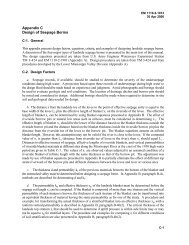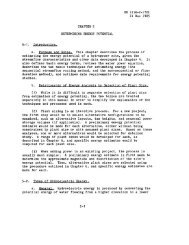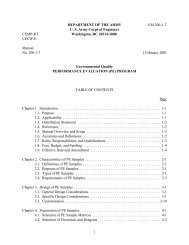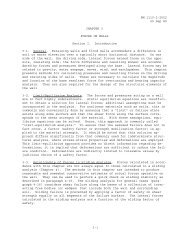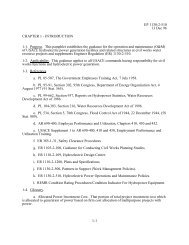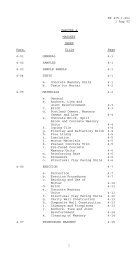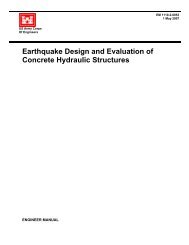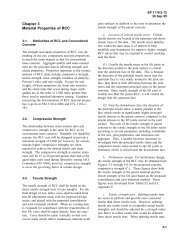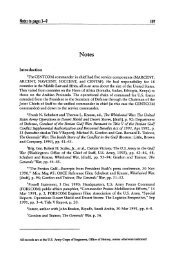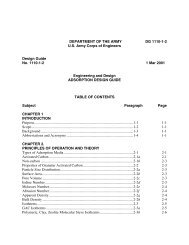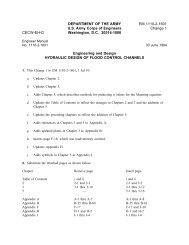em2901.chp:Corel VENTURA - Publications, US Army Corps of ...
em2901.chp:Corel VENTURA - Publications, US Army Corps of ...
em2901.chp:Corel VENTURA - Publications, US Army Corps of ...
You also want an ePaper? Increase the reach of your titles
YUMPU automatically turns print PDFs into web optimized ePapers that Google loves.
EM 1110-2-2702<br />
1 Jan 00<br />
Figure 3-6. Example <strong>of</strong> wire rope hoist system<br />
(4) Stressed skin gates. Stressed skin gates are a type <strong>of</strong> orthotropic gate in which the skin plate<br />
assembly is considered to be a shell or tubular structure spanning between trunnion arms. The skin plate is<br />
stiffened with horizontal and vertical diaphragms and intermediate stiffening members (usually horizontal<br />
tee sections parallel to the intermediate or midlevel horizontal diaphragm). As with other orthotropic<br />
gates, this type <strong>of</strong> gate can save material and gate weight, but fabrication and maintenance costs are <strong>of</strong>ten<br />
higher.<br />
(5) Truss-type or space frame gates. Three-dimensional (3-D) truss or space frame gates were sometimes<br />
used in early tainter gate designs in the 1930s and 1940s. These early gates were designed as a series<br />
two-dimensional (2-D) trusses and were referred to as truss-type gates. They were typically as heavy or<br />
heavier than girder designs and fabrication and maintenance costs were very high. For this reason they<br />
were not adopted as a standard design. More recently, the use <strong>of</strong> computer designed 3-D space frame gates<br />
constructed with tubular sections has been investigated and may be practical in some situations.<br />
3-8




